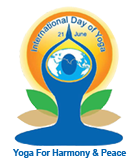The program of Technical Criteria Atlas was formulated with the aim of characterizing the shoreline using observations at selected locations and modeling with numerical simulation. Study of the components (Tide, wave and currents) to produce a database/atlas of engineering parameters like extreme statistics with different return periods have been initiated in the 11th plan and it is proposed to continue in 12th plan period for completion of the atlas for our regions.
a) Objectives:
To develop a reference for engineering design of coastal infrastructure and coastal protection along the coast of India, providing seasonal extreme value estimates of hydrodynamic loads in the form of waves, currents and water levels at 10 locations for different return periods such as 5,10, 25, 50 and 100 years.
b) Participating Institutions:
National Institute of Ocean Technology, Chennai
c) Implementation Plans:
Eight stations are to covered with long term shallow water wave and met-ocean observation
Existing coastal installations like ports, power plants and industries will be used for carrying out continuous observation. Arrangements would be made to collaborate with such agencies to improve observational coverage with local involvement for mutual benefit.
Efforts would be initiated to integrate data through various observation schemes currently operating in the country like tide gauge network, HF Radar, Port monitoring systems, LEO observations, etc into a suitably formatted database for use of coastal engineering community and to feed the data into TCA for future refinements.
The program will be implemented by NIOT. Local academic Institutions, Universities and NITs shall be involved in conducting numerical modelling and measurements at the site. Research scholars / students shall be involved in the project. Secondary information available with IMD, INCOIS, SAC, etc. shall be obtained. The major steps involved in implementation are:
Hydrodynamic modelling and validation with field data (tide, wave and currents)Computation of various parameters for the Atlas.
Software development for web based Atlas.
Arrange local agencies (ports, coastal power plants, etc) to install shore based observatories and feed data for periodical improvement of TCA.
Among the project modules, assessment of sea level rise for studies related to beach stability in islands will be carried out in coordination with NCCR. It is proposed to form a common work plan and a strategy to achieve the end product with combined efforts of both NCCR and NIOT. It is also proposed to form a task group to coordinate the site selection, common quality procedure for data collection and formats along with work flow.
Infrastructure facilities / Lab requirements
The Coastal Engineering facilities available in India are limited at few centers such as IIT and CWPRS and these facilities do not contain shallow water test facilities. The current research needs more investigations in near shore/wave breaking area. The research areas include estimating of wave loads on structures, wave transformation in near shore, sediment transport studies. For the above research the facilities required are as follows:
An open coast pier, in up to water depth of 8 m from the land, that can be used for coastal engineering research facility as well as instrumentation.
A Large Scale Laboratory for sediment transport
A building with all test equipment and facilities
d) Deliverables:
- An atlas for waves, currents and tides for Indian seas.
e) Budget requirement : 36 crores.
(Rs. In crores)
| Name of the Scheme | 2012-13 | 2013-14 | 2014-15 | 2015-16 | 2016-17 | Total |
|---|---|---|---|---|---|---|
| Technical Criteria Atlas | 13 | 8 | 6 | 5 | 4 | 36 |







 Ministry of Earth Sciences
Ministry of Earth Sciences














